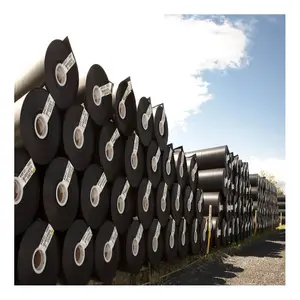Water is life, and proper water storage solutions are crucial for agriculture, livestock, and household use, especially in Kenya’s arid and semi-arid regions. Dam liners are an essential investment for farmers and institutions looking to conserve water efficiently. But where can you buy high-quality dam liners in Kenya? In this blog, we’ll explore the best places to purchase dam liners, factors to consider, and why this is an investment you cannot ignore.
Why Use Dam Liners in Kenya?
Kenya’s erratic weather patterns and prolonged dry spells make water conservation critical. Dam liners are a cost-effective solution that ensures minimal water loss due to seepage, thus helping farmers and institutions maximize their water storage potential.
Benefits of Dam Liners:
- Prevention of Water Loss: Reduces seepage and evaporation.
- Durability: High-density polyethylene (HDPE) liners can last up to 20 years.
- Versatility: Suitable for agricultural dams, fish ponds, and industrial water reservoirs.
- Cost-Effective: Saves water, minimizing operational costs over time.
Where to Buy Dam Liners Near You in Kenya
Whether you’re in Nairobi, Mombasa, Kisumu, Nakuru, or remote towns, reliable suppliers are just a call away. Here’s a breakdown of where you can find dam liners across the country.
Major Suppliers of Dam Liners in Kenya
| Supplier Name | Location | Contact Information | Specialty | Website |
|---|---|---|---|---|
| Prime Variable Covers Grekkon Limited | Nairobi Nairobi, Eldoret, Nakuru | +254 724 157 314 +254 715 157 132 | HDPE and PVC liners, custom sizing HDPE and PVC liners, custom sizing | Prime Covers Kenya Grekkon Kenya |
| Aqualiner East Africa | Nairobi | +254 720 123 456 | Fish pond liners, UV-treated liners | Aqualiner East Africa |
| Mega Plastics Kenya | Mombasa, Kisumu | +254 733 987 654 | Large-scale dam liners | Mega Plastics Kenya |
| Ruiru Poly Tanks | Ruiru, Thika | +254 727 654 321 | Affordable liners for small projects | Ruiru Poly Tanks |
Factors to Consider When Buying Dam Liners
1. Material
The most common types of dam liners are HDPE, LDPE, and PVC. Each has unique advantages:
- HDPE: Best for large dams due to its durability and UV resistance.
- LDPE: More flexible, ideal for irregularly shaped ponds.
- PVC: Affordable, suitable for smaller projects.
2. Thickness
The thickness of a dam liner influences its durability:
- 0.5mm: Suitable for fishponds.
- 1mm: Ideal for medium-sized dams.
- 1.5mm+: Recommended for large agricultural dams.
3. Supplier Reputation
Buy from trusted suppliers with good reviews. Avoid vendors offering unverified or substandard products.
4. Installation Services
Some suppliers offer installation services, ensuring proper placement and sealing.
5. Cost and Warranty
Compare prices and ensure the liner comes with a warranty for durability.
Statistics: Water Use and Demand in Kenya
According to the Kenya National Bureau of Statistics (KNBS), water demand in Kenya has been rising due to agricultural and domestic needs. Here’s a snapshot:
| Year | Water Demand (Billion Cubic Meters) | Population Served with Water Storage |
|---|---|---|
| 2010 | 1.8 | 35% |
| 2020 | 2.4 | 50% |
| 2030 (Projected) | 3.5 | 70% |
Why These Figures Matter
- Investing in dam liners can help bridge the gap in water storage capacity, ensuring more people and farms have access to reliable water sources.
External Resources for Farmers
- Kenya Water Resources Authority (WRA): Regulatory body offering guidance on water management.
- FAO Kenya: Resources on sustainable agriculture practices.
- NEMA Kenya: Environmental impact assessments for dam projects.
Ready to transform your water storage capabilities? Don’t wait until the next dry season to secure your dam liner. Contact trusted suppliers near you today for affordable, durable, and reliable dam liners.
Get a Quote Now!
Reach out us for expert advice and solutions tailored to your needs.
Why Choose the Right Dam Liner?
“Choosing the right dam liner is more than just a purchase; it’s an investment in sustainable farming and water conservation. Don’t settle for less—opt for durability, affordability, and reliability.”
For more insightful articles, stay tuned to our blog and take charge of your water management needs today!

